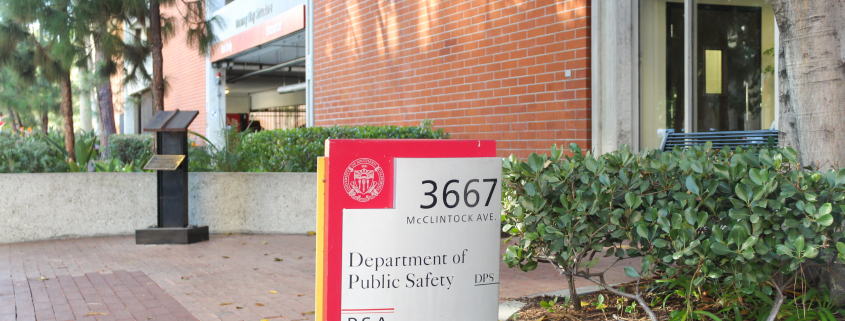Search for DPS leader prolonged to late fall

The Department of Public Safety has extended its search for a new leader, with applications for the role of assistant vice president/chief of public safety — a change from the previous title, executive director/chief of public safety — being accepted until the end of August. The search, which began following former DPS Chief John Thomas’ retirement Jan. 12, was narrowed down to two finalists in April and an appointment was set to be made in May.
Interim DPS Chief David Carlisle has served in the role since Jan. 13 and will continue to do so until an appointment for the permanent position is made, said Associate Senior Vice President of Safety and Risk Assurance Dr. Erroll Southers in an interview with the Daily Trojan. The updated position was posted July 5 and the extended timeline for the appointment now stipulates that a final candidate will be chosen by mid- to late November.
The decision to change the position title, Southers said, was made partly as a way to keep pace with titles of public safety leader positions at other universities and to broaden the applicant field. Many previous candidates in the search, he said, were assistant vice presidents of comparable departments — UCLA recently appointed a new assistant vice chancellor of environment, health & safety; a chief of public safety oversees campus safety at Chapman University, and NYU appointed in 2016 a vice president for global campus safety.
“One of the things that prompted the change was we were hoping that we might attract individuals who transitioned from public safety to university administration oversight of these areas,” Southers said, noting himself as an example of this career trajectory — Southers began his career in law enforcement at the Santa Monica Police Department, later working at the FBI and in the California Office of Homeland Security, as a USC professor and now within the University administration.
The 22-person search committee, consisting of students, staff, faculty and neighborhood stakeholders, will revamp the process of identifying and screening candidates in September. Interviews with executive level leadership will be conducted earlier on in the process this time around, Southers said, in September and October, before candidates are brought to the full search committee. A town hall will be held in October that will again present two top candidates, similarly as was done in April at two Finalist Community Input Sessions.
The responsibilities falling under the leadership position will not change despite the position’s new title, Southers said, but the process will emphasize regulatory issues as they relate to Clery Act — which requires universities to report campus crime data, support victims of violence and publicly outline safety policies — on Equity, Equal Opportunity, and Title IX.
“We want to make sure that that person is steeped in that area, and then some operational challenges,” Southers said. “We faced the same challenge as many public safety entities across the country — municipal and campus — in terms of recruiting, retention and getting people on board, so those are things we want to make sure that someone is able to address and have some experience doing that.”
Deliberations on new candidates did not continue over the summer, but a subcommittee met and discussed lessons learned and input received during the earlier search.
“We could take advantage of the fact that we had all that valuable information from previous community input sessions we could use, so we eliminated having to do that again,” Southers said. “We’ll go forward now with a more streamlined and, hopefully, seamless process going forward.”

